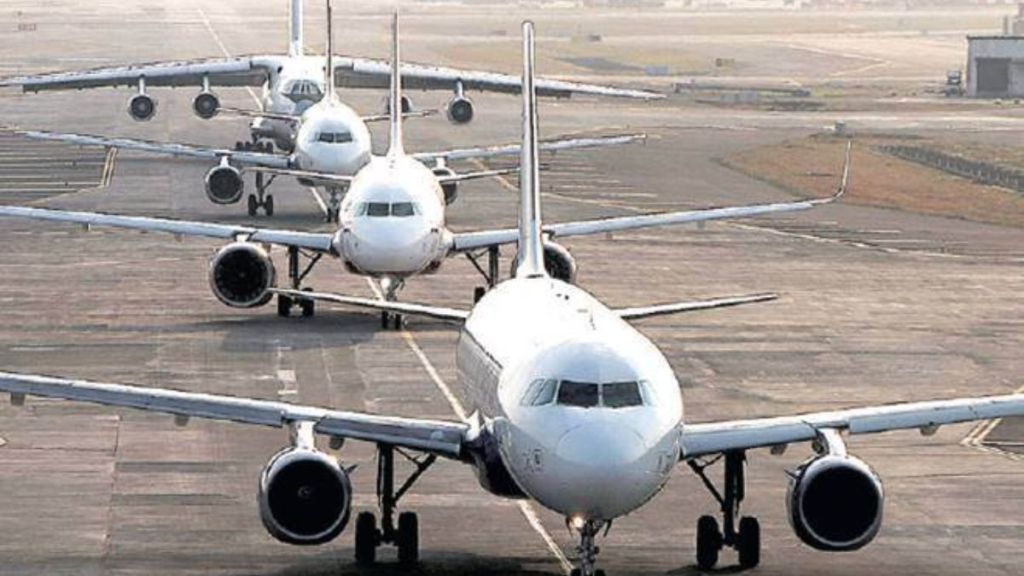In 2024, India’s aviation sector achieved remarkable growth with the introduction of over 100 new air routes. This expansion marks a pivotal moment in the country’s efforts to enhance connectivity, improve regional accessibility, and foster economic development. Key stakeholders, including IndiGo, Air India, SpiceJet and government authorities, have worked in collaboration to strengthen the country’s aviation infrastructure, enabling millions of passengers to access affordable and convenient air travel, especially in underserved tier-II and tier-III cities.
Driving Regional Growth through New Routes
This surge in regional connectivity is largely driven by the Ude Desh ka Aam Naagrik (UDAN) scheme, launched in 2016, which has significantly democratised air travel across the nation. In 2024, this initiative reached an unprecedented pace of growth, with airlines and regional airports expanding to meet the increasing demand for domestic air travel. The government’s push to improve connectivity has opened up new opportunities for business, tourism, and regional development.
Shivani Singh Deo, Country Manager- India, Virgin Atlantic said, “2024 was a dynamic year for the Indian aviation sector, marked by robust growth in domestic and international travel. Our ambitious growth plans for 2025, with almost a million seats available in India, reflect our confidence in the long-term prospects of this market. This year, the launch of our direct flights from London Heathrow to Bengaluru and increased capacity for Mumbai further strengthens our network to UK and US, offering greater choice and convenience for our customers. We believe 2025 will be a pivotal year for Indian aviation, as the country strengthens its position as a major global aviation hub, driven by increasing demand and infrastructure investments.”
Some notable additions in route expansions include:
IndiGo’s New Domestic Routes: IndiGo launched several new domestic connections, including daily direct flights from Bengaluru to Puducherry and Hyderabad, along with new routes between Delhi-Rajahmundry and Delhi-Darbhanga. Additionally, the airline expanded its international network, with daily direct flights from Bengaluru to Langkawi and connections to major US cities starting in December 2024. In its winter schedule, IndiGo introduced eight new flights to bolster accessibility across Northeast India, including connections between Agartala-Dibrugarh and Guwahati-Dimapur.
Meanwhile, IndiGo anticipates transporting approximately 112 million passengers in 2024, reflecting its strong growth trajectory and commitment to meeting increasing travel demand. IndiGo CEO Pieter Elbers in a LinkedIn post said, “2024 was filled with amazing milestones. IndiGo turned 18, launched IndiGoStretch and loyalty program, and ordered Airbus A350-900 widebody aircraft. Last year we welcomed 100 million+ customers, this year would be over 112,000,000.”
IndiGo achieved a significant milestone by becoming the first airline to commence operations from the newly inaugurated Maryada Purushottam Shri Ram International Airport in Ayodhya. Officially opened to the public in January, this state-of-the-art airport aims to boost regional connectivity and accommodate the increasing influx of travellers drawn to the historic and cultural significance of the. In March, IndiGo introduced a direct flight connecting Bengaluru to Lakshadweep, providing seamless travel options to this idyllic tropical destination.
Air India and Air India Express Expansion: Air India added new direct flights between Port Blair and Bengaluru, while Air India Express introduced daily flights between Vijayawada and Bengaluru. These expansions contribute significantly to enhancing regional accessibility. Air India introduced its new Airbus A350-900 on key domestic routes starting January 22, 2024, further strengthening its domestic operations.
Apart from this, Bengaluru’s Kempegowda International Airport airport saw the introduction of new domestic routes, including flights to Jabalpur, Nashik, and Jeddah by IndiGo, highlighting the growing demand for regional and international air travel.
In 2024, SpiceJet significantly expanded its domestic network by introducing a total of 38 new domestic routes. In response to the demand created by the Kumbh Mela pilgrimage, SpiceJet introduced special daily flights connecting Prayagraj to key cities, further tapping into regional travel opportunities.
Economic Impacts and Regional Development
These route expansions are expected to drive significant economic growth by reducing travel time, enhancing accessibility to smaller cities, and stimulating tourism, business, and employment opportunities. The increased connectivity will help bridge the urban-rural divide, providing people in remote regions with greater access to healthcare, education, and essential government services.
Airline and Market Dynamics
The surge in regional connectivity offers airlines new opportunities for profitability and network diversification. Increased competition and demand for affordable, direct flights will enable carriers to tap into underserved markets, contributing to the broader economic agenda. As regional airlines expand their networks, they will also increase flight frequencies on existing routes to meet passenger demand.
Performance Metrics and Market Share
India’s domestic air passenger traffic grew by 5.3 per cent in October 2024, with budget carrier IndiGo leading the market, capturing 63.3 per cent of the passenger share. Air India and Vistara followed, with combined market shares reaching 28.5 per cent. This surge in traffic underscores the growing reliance on air travel and highlights the role of affordable, efficient carriers in driving the industry forward.
Infrastructure Investments for Seamless Travel
The growth in domestic routes is supported by significant infrastructure upgrades, including the development of new regional airports and enhancements to existing facilities. Upgrades in terminals, security systems, and ground services are improving the overall passenger experience, ensuring a smooth journey for both domestic and international travellers.
In conclusion, the introduction of over 100 new domestic air routes in 2024 marks a turning point for Indian aviation. This growth is not only bolstering domestic travel but also fostering economic development, connecting regional markets, and enabling businesses and tourists to tap into previously underserved areas. As India strengthens its position as a major aviation hub, the future of regional connectivity looks exceptionally promising, paving the way for sustained growth in the years to come.

